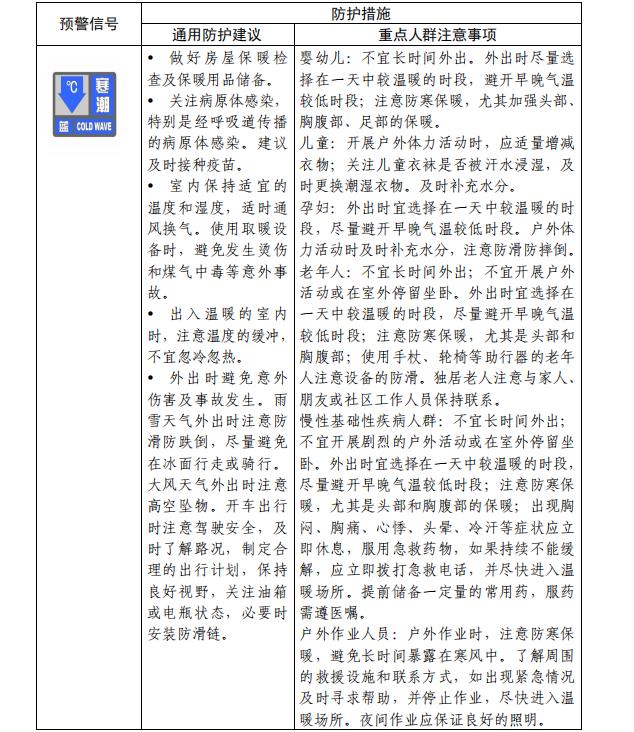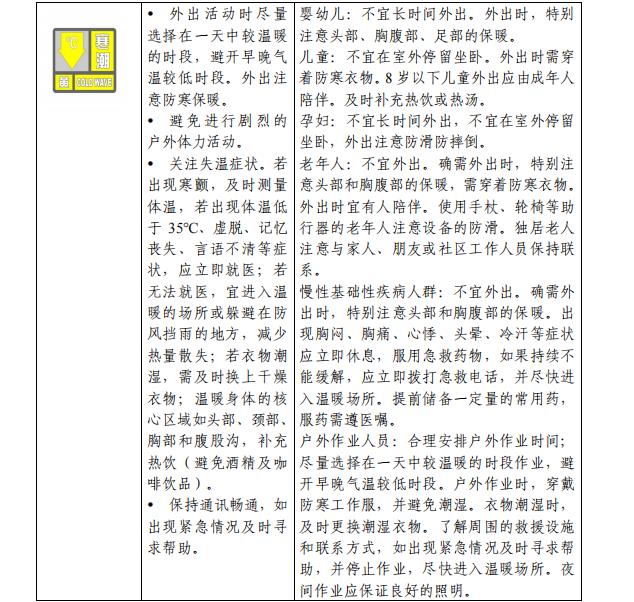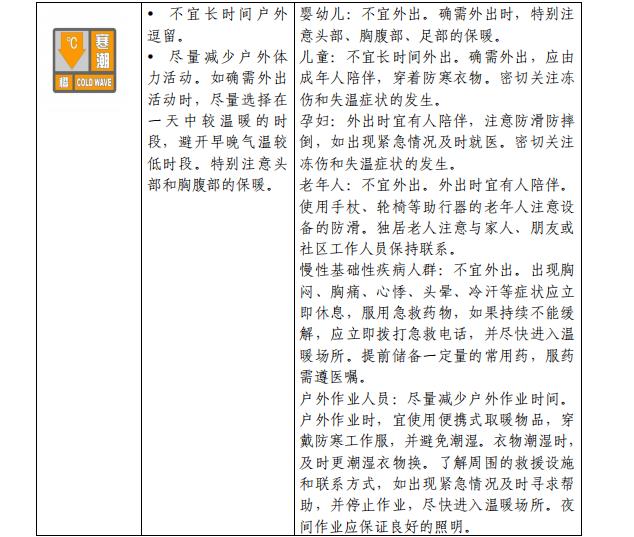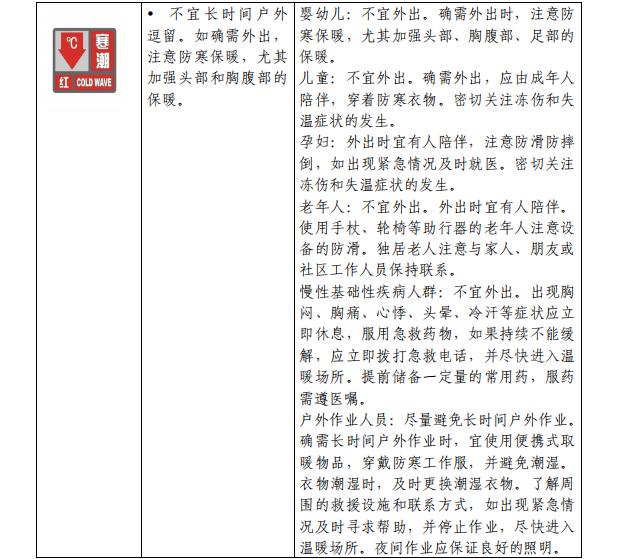The National Bureau of Disease Control and Prevention issued the "Guidelines for Public Health Protection in Cold Wave"
CCTV News:According to the website of the National Bureau of Disease Control and Prevention, in order to guide the public to scientifically respond to the cold wave, enhance self-protection awareness and reduce the possible health damage caused by cold wave weather, we organized experts from the Institute of Environment of China CDC and other units to formulate the Cold Wave Public Health Protection Guide (hereinafter referred to as the Guide) based on the characteristics of the cold wave on the basis of scientific research and risk assessment, and put forward protection suggestions for different key groups to protect public health to the maximum extent.
The Guide consists of five parts: the basic concept of cold wave, health risks, key protected people, cold wave meteorological early warning information, and cold wave early warning classification protection measures guide. The definition of cold wave and its effects on human respiratory, cardiovascular and urinary systems are mainly introduced in two parts: basic concepts and health risks. Key protection groups point out the key groups that need attention during the cold wave, including sensitive groups, people with chronic basic diseases and outdoor workers. Cold wave meteorological early warning information guides the public to scientifically understand cold wave forecast and early warning information. The cold wave warning and grading protection measures guide puts forward targeted protection measures for key people respectively.
The full text of the Guide is as follows:
Cold wave public health protection guide
First, the basic concept of cold wave
A cold wave is a weather activity in which cold air from high latitudes invades the middle and low latitudes on a large scale, causing severe temperature drop (according to the standard of Cold Air Grade GB/T 20484-2017, a cold wave means that the daily minimum temperature drops to 8℃ or above within 24 hours, or 10℃ or above within 48 hours, or 12℃ or above within 72 hours, and the daily minimum temperature drops to 4℃ or below.
Second, cold wave health risks
The drop in temperature can lead to the contraction of human blood vessels and the acceleration of respiratory rate. During the cold wave, cold weather is easy to cause superficial skin damage and form chilblain, which aggravates the pain of patients with arthritis and rheumatoid arthritis. It is easy to induce airway spasm and abnormal immune function of respiratory system, and cause acute exacerbation of chronic obstructive pulmonary disease, acute attack of bronchial asthma, acute respiratory infection and other respiratory diseases. It is easy to cause cardiovascular and cerebrovascular diseases, such as angina pectoris, myocardial infarction, arrhythmia, acute heart failure, transient cerebral blood supply deficiency, stroke and so on. At the same time, it may aggravate urinary system diseases and endocrine system diseases, such as chronic kidney disease and diabetes.
Third, the key protection groups
There are three main categories of people: the first category is sensitive people, such as infants, children, pregnant women, the elderly and so on; The second category is people with chronic basic diseases, such as cardiovascular and cerebrovascular diseases and respiratory diseases; The third category is outdoor workers, such as traffic police, sanitation workers, construction workers, couriers, takeaways, etc.
Four, cold weather warning information
According to the cold wave warning signal and defense guide, the cold wave warning signal is divided into four levels.
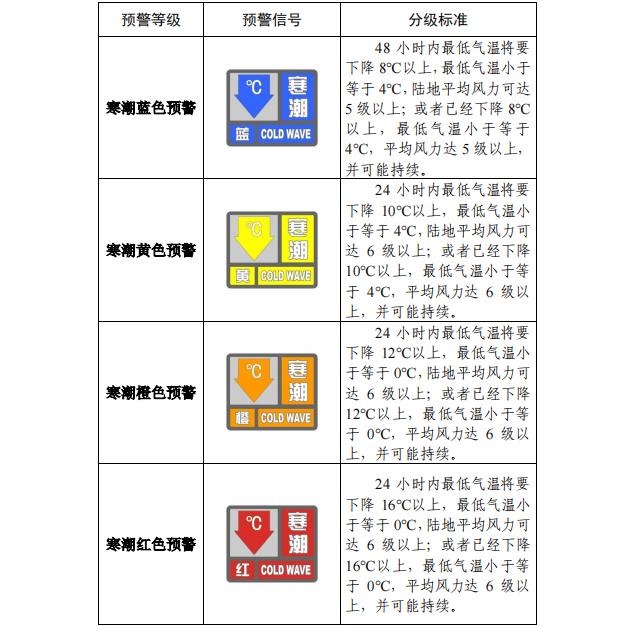
Five, classification protection measures guide
According to the level of cold wave warning signal, we put forward suggestions on protective measures for classified people.
